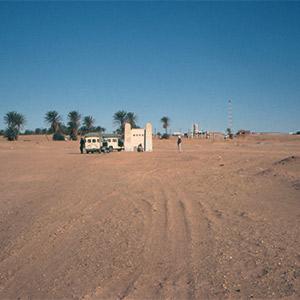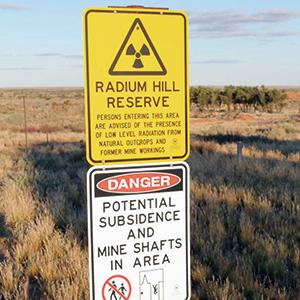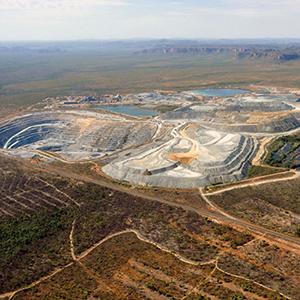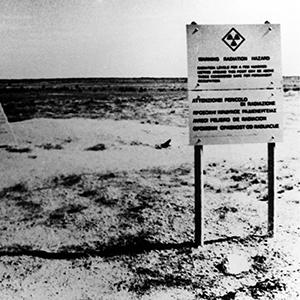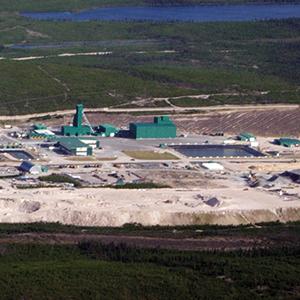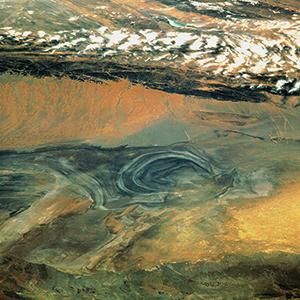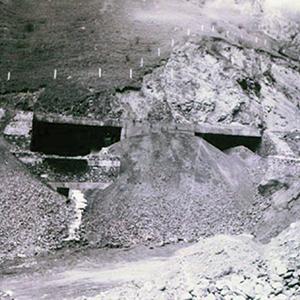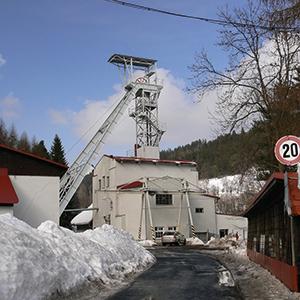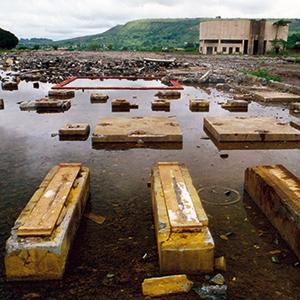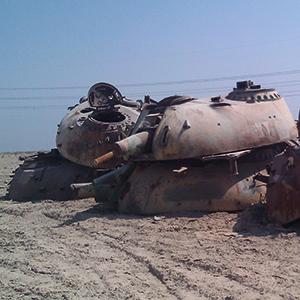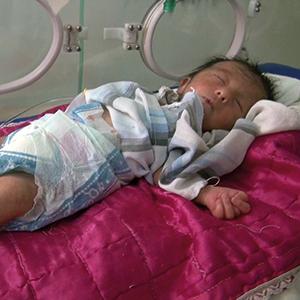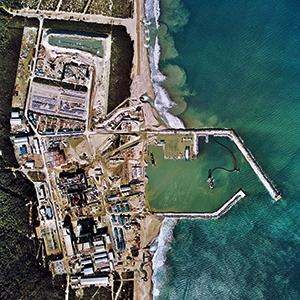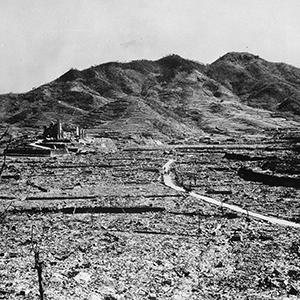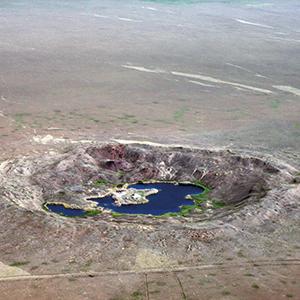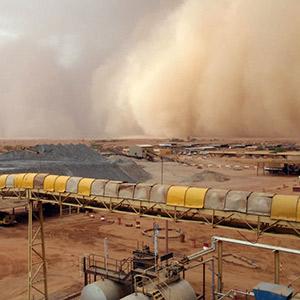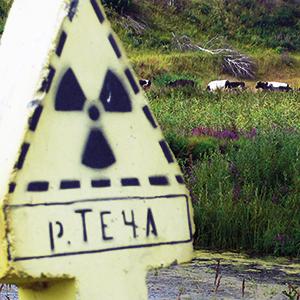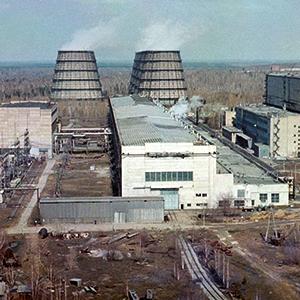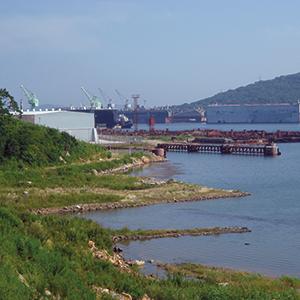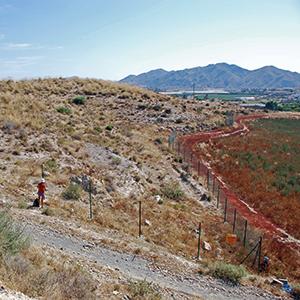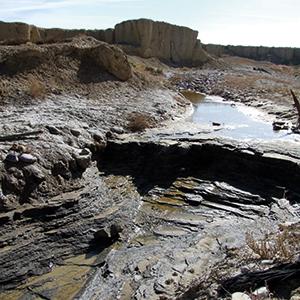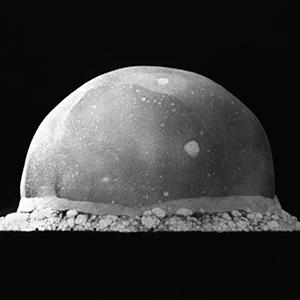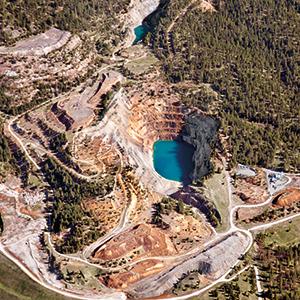Wismut region, Germany

Between 1946 and 1990, the joint Soviet-East German stock company Wismut turned the Erzgebirge mountain range in Saxony and the adjacent Vogtland in Thuringia into one of the world’s largest uranium mining regions and the most important supplier of uranium to the Soviet nuclear weapons program. As a lasting legacy, many thousands of workers and inhabitants of the region are still suffering from radiation induced diseases such as lung cancer.
Photo: Drilling into a uraniferous ore layer. Especially during the early years of the Wismut mine, proper protection from radioactive dust and radon gas was not provided to the miners. Credit: Andreas Köhler
History
Uranium, then called “pitchblende” was first discovered in the Erzgebirge (“ore mountains”) in the 19th century and was at first mainly used for scientific purposes. During the Nazi years, uranium was mined intensively in order to advance Hitler’s plans for a nuclear bomb. After the war, the Soviets confiscated the German stockpiles of uranium, giving their own nuclear ambitions a giant push.
Output from the mines quickly accelerated after the war and by 1947, the Erzgebirge had become the USSR’s most important source of uranium ore, with an annual yield of 145 tons. In May 1947, the Soviet stock company “Wismut” was officially created and additional mines were established in the regions of the Erzgebirge and around the town of Ronneburg in Eastern Thuringia. More than 40,000 people were forced to work in the mines and by 1950 the annual production of uranium had already exceeded 1,000 tons.
In the 1950s, the new German Democratic Republic was officially included in the stock company and production grew rapidly with about 130,000 miners working in more than 20 mines in the region. Soon, the Wismut company became the world’s third largest producer of uranium, with a total yield of 200 million tons of uranium ore until the closure of it mines in 1990.
Health and environmental effects
Through the mining process, radioactive isotopes such as radon, polonium or bismuth were released from the uranium ore and were inhaled directly by the miners. In the lungs, these particles emit alpha- and beta radiation for many years, causing damage to adjacent tissues, as well as mutations, and cancer.
Over the years, about 395 million tons of radioactive mining waste were dumped on 48 giant tailings heaps, ultimately contaminating an area of about 3,700 hectares. An additional problem were the highly toxic liquid tailings, which were created by uranium processing. 200 million tons of uranium ore yielded about 216,000 tons of refined uranium, but at the same time led to roughly 197 million tons of radioactive tailings.
Dumped in tailings ponds, these presented an enormous danger to the environment and to public health. In 1954, a dam near the town of Lengenfeld breached, spilling 50,000 cubic meters of radioactive material over a distance of more than four km. Local drinking water supplies were contaminated, while radioactive dust from the tailings was scattered by winds throughout the region. Silicosis and lung cancer became relevant health risks for the workers and the local population.
Radiation exposure was first measured in the region in 1956; the results of the research were, however, kept secret for many decades. In 2006, the German Federal Office for Radiation Protection published the largest study ever performed on uranium workers, including 59,000 former miners of the Wismut company.
The results, published also in the “British Journal of Cancer,” showed a 50–70 % increase in the rate of lung cancer, leading to more than 7,000 radiation-induced deaths among the 59,000 subjects surveyed (11.9 %). The study also showed that the risk for lung cancer was highest 15–24 years after uranium exposure, so that numerous new cases can be expected in the future.
Outlook
Today, the Wismut company’s successor is a state-funded organization, dedicated to combating the detrimental effects of 50 years of uranium mining. Flooding of mines, water purification, tailings management and landscape rehabilitation have already cost the German tax payers more than 7 billion Euro by the year 2014 and will have to be continued for centuries to come.
In the meantime, many of those affected by Wismut radioactivity are still struggling for justice and compensation. According to the German Federation of Institutions for Statutory Accident Insurance and Prevention (HVBG), a total of 7,963 cases of lung cancer were officially recognized as occupational diseases. It is estimated that the true number of cases is much higher. The local population, which was also exposed to increased levels of radioactivity, had no chance of recognition or compensation. The legacy of uranium mining will continue to shape the region and the health of its inhabitants for many decades to come. They, too, are Hibakusha, they, too, suffer from the effects of the civil and military nuclear industry.
Further reading
- More information on the health risks of uranium mining: www.nuclear-risks.org
- Proceedings of the IPPNW Wismut conference 2014 in Ronneburg: www.nuclear-risks.org/de/uranabbau/fachtagung/dokumentation.html
References
- “Uranbergbau im Erzgebirge und Kalter Krieg.” Radiz Schlema e. V., October 11, 1997.
- Becker, J et al. “20 Jahre Wismut GmbH – Sanieren für die Zukunft.” German Federal Ministry for Economy and Technology, March 2011. www.bmwi.de/Dateien/Energieportal/PDF/wismut,property=pdf,bereich=bmwi2012,sprache=de,rwb=true.pdf
- Diehl, P. “Altstandorte des Uranbergbaus in Sachsen.” Website of the WISE Uranium Project. www.wise-uranium.org/pdf/wisalt.pdf
- Kreuzer, M et al. “The German Uranium Miners Cohort Study (Wismut cohort), 1946–2003.” Federal Office for Radiation Protection, 2011. http://tinyurl.com/olpbnnj
- Grosche, B et al. “Lung cancer risk among German male uranium miners: a cohort study, 1946–1998.” Br J Cancer. November 6, 2006; 95(9): 1280–1287. www.ncbi.nlm.nih.gov/pmc/articles/PMC2360564
- Koppisch D et al. “Das Berufskrankheitengeschehen im Uranerzbergbau der ‘Wismut’ von 1946 bis 2000.” Arbeitsmed.Sozialmed.Umweltmed. 39 (2004) 120–128. www.asu-arbeitsmedizin.com/gentner.dll/0403-120_MjAwODcw.PDF?UID=9061B8056BCDB405E00AE00A80C14C51E9CF16C79BF1A591







